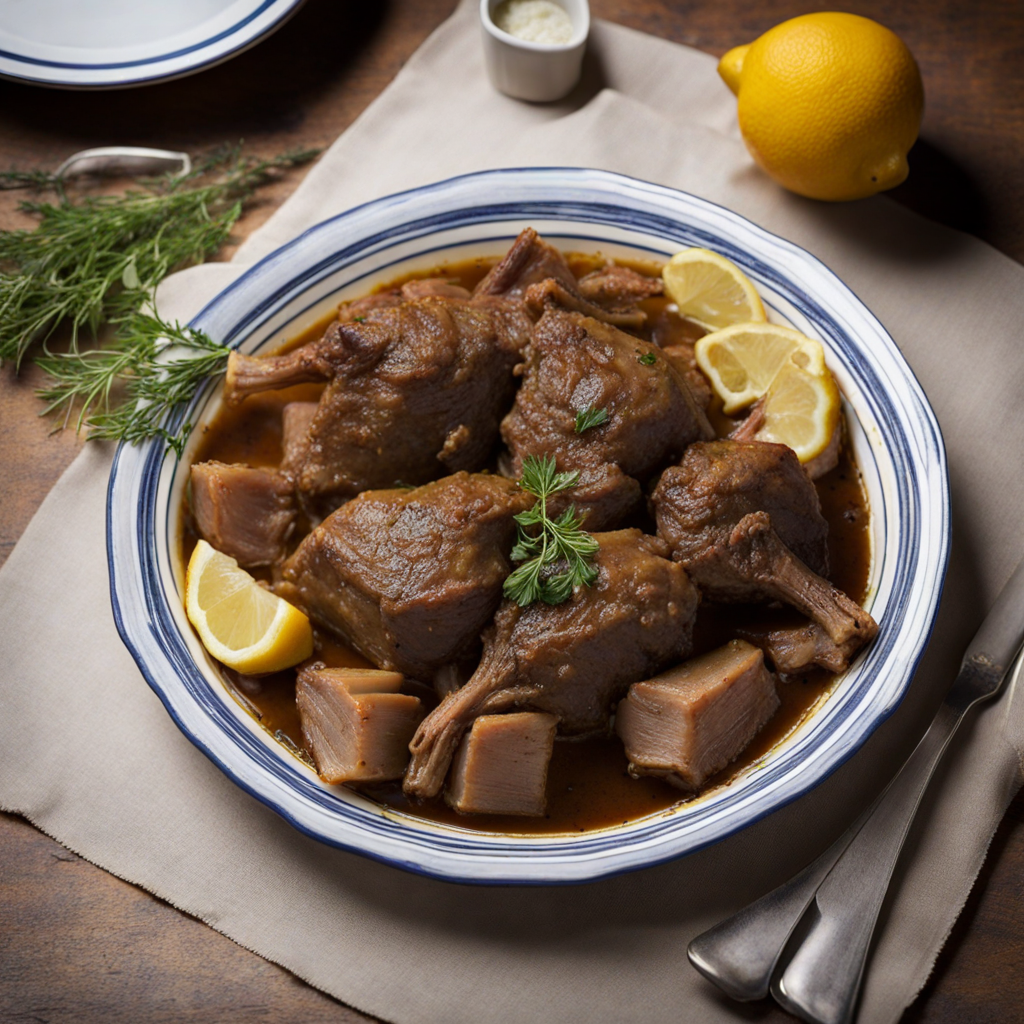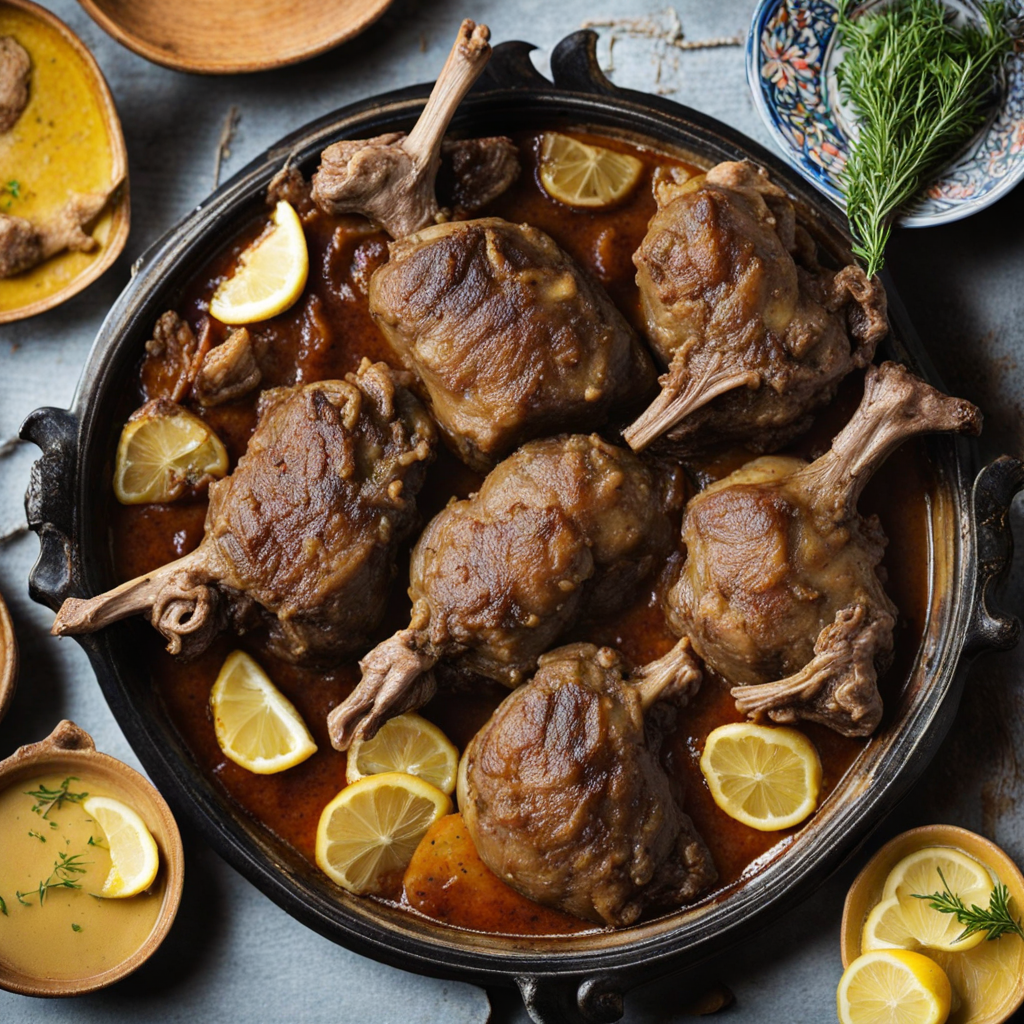Kleftiko
Kleftiko is a traditional Cypriot dish that embodies the rich culinary heritage of the island. It features tender, slow-cooked lamb that is marinated in a medley of aromatic herbs and spices, including garlic, oregano, and lemon juice. The meat is typically wrapped in parchment paper or foil, allowing it to steam in its own juices, resulting in an incredibly moist and flavorful dish. This unique cooking method not only enhances the flavor but also preserves the natural tenderness of the lamb, making each bite a delightful experience. In addition to the succulent lamb, Kleftiko often includes a variety of vegetables such as potatoes, carrots, and onions. These ingredients are added to the pot, allowing them to absorb the rich flavors of the meat and herbs as they cook together. The result is a hearty and aromatic dish that is perfect for sharing, often served straight from the oven or pot at the table. The combination of savory meat and earthy vegetables creates a symphony of taste that is both comforting and satisfying. Enjoying Kleftiko is not just about the flavors; it’s also about the experience. Traditionally, it is enjoyed during gatherings or special occasions, where friends and family come together to savor the meal. Paired with a glass of local Cypriot wine or a refreshing salad, Kleftiko invites you to indulge in the warm hospitality of Cypriot culture. This dish is a true celebration of flavors, making it a must-try for anyone looking to explore the diverse and delicious world of Mediterranean cuisine.
How It Became This Dish
The Rich History of Κλέφτικο: A Culinary Treasure of Cyprus #### Origin and Historical Context The dish known as Κλέφτικο (Kleftiko) is a cornerstone of Cypriot cuisine, with roots deeply embedded in the island's tumultuous history. The word "Kleftiko" derives from "kleftes," meaning "thief" in Greek. This nomenclature links the dish to the bandits who roamed the mountainous terrains of Cyprus during the Ottoman period, particularly in the 18th and 19th centuries. These outlaws, known for their resistance against oppression, often resorted to stealing livestock as a means of survival. To evade capture, the kleftes would prepare their meals in secret. They would dig a hole in the ground, line it with stones, and use the earth as an oven to cook their stolen lamb slowly. This method of cooking not only concealed their activities but also resulted in tender, flavorful meat infused with the smoky aroma of the earth. The ingenuity of the kleftes in utilizing their surroundings to prepare food reflects the resourcefulness born from their circumstances. #### Cultural Significance Kleftiko is more than just a dish; it embodies the spirit of resistance and the connection between the land and its people. Over time, it evolved from a practical meal for outlaws into a beloved dish that symbolizes Cypriot identity and heritage. The slow-cooking method, which requires a few hours, encourages communal gatherings, making it a dish often prepared for family celebrations, weddings, and other significant social occasions. In Cypriot culture, food is a medium for storytelling and remembrance. Kleftiko serves as a narrative of resilience, community, and the shared history of the island’s inhabitants. Its preparation often involves family collaboration, where generations come together to share not only the cooking but also the tales of their ancestors, thus reinforcing familial bonds and cultural continuity. #### Ingredients and Preparation Traditionally, Kleftiko is prepared using lamb, which is marinated in a blend of aromatic herbs and spices. Common seasonings include garlic, lemon juice, oregano, and sometimes a splash of red wine. The choice of lamb is significant, as it reflects the pastoral lifestyle that has characterized many Cypriot communities for centuries. The cooking process of Kleftiko is where the magic happens. In its traditional form, the marinated lamb is wrapped in parchment paper or aluminum foil, sometimes with potatoes and vegetables, and placed in a pit oven or slow-cooked in a conventional oven. The slow cooking method allows the meat to become incredibly tender, as it stews in its juices while absorbing the flavors of the herbs. The wrapping technique ensures that the moisture is retained, resulting in rich, succulent meat that almost melts in your mouth. #### Evolution Over Time As Cyprus transitioned through various phases of occupation and influence, the culinary landscape evolved, and so did Kleftiko. The dish adapted to include various regional influences, reflecting the island's diverse history. With the British colonial period in the late 19th and early 20th centuries, for example, the incorporation of new cooking techniques and ingredients found their way into Cypriot kitchens. Modern recipes may feature variations, such as the addition of local cheeses like Halloumi or the use of seasonal vegetables. The introduction of contemporary culinary techniques, like sous-vide cooking, has also allowed chefs to experiment while still honoring traditional methods. However, the essence of Kleftiko remains unchanged, rooted in the stories and traditions of the Cypriot people. #### Kleftiko in Contemporary Cypriot Cuisine Today, Kleftiko holds a revered place in both home kitchens and restaurants across Cyprus. It is often featured on menus as a signature dish, celebrated for its connection to Cypriot identity. The dish has transcended the boundaries of the island, gaining recognition among food enthusiasts and chefs worldwide. This popularity has sparked interest in Cypriot cuisine, leading to a resurgence in the appreciation of traditional dishes. Moreover, Kleftiko has become a symbol of Cypriot hospitality. When visitors come to Cyprus, they are often greeted with a feast that includes Kleftiko, showcasing the island’s culinary heritage. The dish serves as a bridge for cultural exchange, allowing people from different backgrounds to experience the flavors of Cyprus and the stories embedded in its food. #### Conclusion In essence, Kleftiko is not just a meal; it is a narrative steeped in history, culture, and identity. From its origins among the kleftes to its status as a beloved dish in modern Cypriot cuisine, Kleftiko encapsulates the resilience and creativity of the Cypriot people. It stands as a testament to the island's tumultuous history and the communal bonds forged through shared meals. As we savor a plate of Kleftiko, we partake in a culinary journey that spans centuries, connecting us to the struggles and triumphs of those who came before us. Whether enjoyed in a family gathering or a fine dining experience, Kleftiko remains a symbol of tradition, hospitality, and the rich tapestry of Cypriot culture—a dish that tells a story with every bite.
You may like
Discover local flavors from Cyprus







